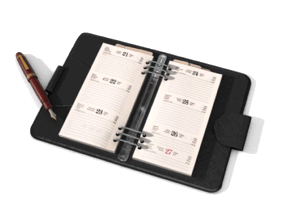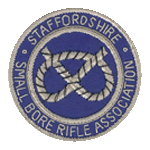
NSRA Affiliation No 2285
Staffordshire Smallbore Rifle Association
The History of the Staffordshire Smallbore Rifle Association - Page 1
Page last updated on Monday, 6 January, 2025 2:31 PM
'The Chipperfield Ranges'

The above photograph gives a panoramic view of The Chipperfield Ranges, Baldwin's Gate, Newcastle-under-Lyme, Staffordshire, ST5 5EA.
What3Words: ///perfume.annual.command
SSRA Memberships, Range Fees, And Chipperfield Range Standing Orders And Code Of Conduct
In order to shoot at the Chipperfield Ranges you must be a member of one of the following Membership Categories.
All users of the The Chipperfield Ranges, Baldwin's Gate, Newcastle-under-Lyme, Staffordshire, ST5 5EA, must be aware of and comply with the information contained within the Chipperfield Range Standing Orders and Code of Conduct.
Details of Chipperfield Range Fees.
Links To Other Websites
The Staffordshire Smallbore Rifle Association's website (www.staffordshire-sra.org.uk) contains links to other websites of interest. However, once you have selected any of the links in order to leave our site, you should note that we do not have any control over any other website. Therefore, we cannot be responsible for the protection and privacy of any information which you provide whilst visiting such sites, and such sites are not governed by our own privacy statement.
Catalogue Of The SSRA Trophies
The SSRA can boast a whole array of fine trophies in their collection, of which they are always proud to present to those successful in the various competitions in which they compete.
Contained within the Catalogue of SSRA Trophies page, you will be able to view the the past winners of the various trophies, including a selection of photographs depicting the variety of trophies that are awarded.
The Development Of The Chipperfield Ranges, Baldwin's Gate
The first record is in 1950 when plans were submitted and approved for the use of the land as a rifle range, followed in 1953 with the application and approval of a concrete club house. The range, comprising of about fifteen acres, is situated in an old sand quarry in the middle of a pleasant woodland area. For fourteen years the County had hired the range from the Maer Estate, but when the estate was put up for sale in 1964, the then Range Manager – Mr. Chipperfield – suggested to the clubs in the County that they should combine and purchase the freehold of the range. When sufficient support was not forthcoming he put up the money himself. Later on, the clubs did provide the money.
The first improvement to the range was to divide off a room across the end of the clubroom to provide a stats room and a smaller room with a counter into the clubroom that could be used as a kitchen and servery. Joe Bradbury then arranged for the old entrance door to be replaced with an attractive glass door. Having seen an article in a paper reporting work carried out for sports clubs by R.E. Territorials, Dennis Hannam suggested that he contact the C.O. of the local R.E’s to see if they would repair the range drive. Dennis pointed out that we provide free shooting facilities to the two local cadet forces, and so they agreed to do the work as a training exercise, provided the County supplied the ballast.
At that time, we only had ranges at 25, 50 and 100 yards. When it was suggested by Dennis Hannam that we should construct a 50 metre range there was some objection since no-one in the County shot at that range. When it was pointed out that the reason was because there was no suitable range, agreement was reached. Plans were submitted to the M.O.D. for a range alongside the 100 yard range, and they were approved. Dennis Hallam’s neighbour, who was a shooter, owned a company which laid ducting for British Telecom, and he arranged for his staff to work on the range, clearing the ground and building a stop butt.
George Brittain, a member of Dennis’s club, had contacts with a vehicle body builders in Stoke-on-Trent who had lots of large packing cases that they couldn't dispose of. These cases had previously contained sheet metal. George and Dennis transported quantities of this wood by lorry to the range, where Dennis was able to construct a twelve position covered firing point for rifle and pistol shooting.
A fellow shooter, David Burns, whom at that time was a Lecturer in Engineering at Newcastle-under-Lyme College, arranged for his Engineering Students - all of whom were following a day release course - to design and manufacture twelve turning targets, which would be operated by compressed air.
On successful completion of the turning target system, it was then ready to be installed at the Chipperfield Ranges. The installation of the system was carried out by David Burns and Ken Mainey.
Ken, a member of Leek Shooting Club, went to great lengths to ensure that all the measurements were to UIT Standards, so as to ensure that any National Record Score would be ratified.
The turning targets proved to be a popular addition to the Chipperfield Ranges, and were subsequently used by women pentathletes for training purposes, and later for the Women's Pentathlon Championship, as can be seen from the two photographs below.
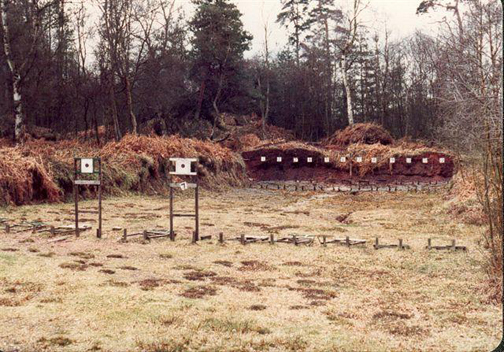
The above photograph shows the completed 50 metre 'D' range.
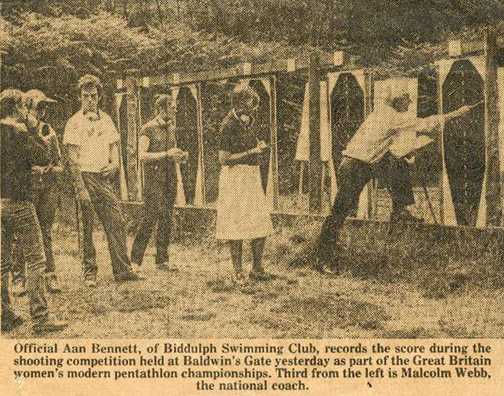
The above photograph shows competitors in the Women's Modern Pentathlon Championships.
It had been obvious for some time that a single Elsan toilet was inadequate and that something had to be done. We had a water supply on the site, so it was proposed that we consider building a toilet block with septic tank drainage. We consulted the Forestry Society for their advice with a view to clear felling a large part of the mature woodland that we owned, replanting the area and using the money for the building work. The Forestry Society supervised the work, and as the replanting was with mixed hard and softwood trees we obtained grants from the Forestry Commission.
Joe Bradbury provided the plans and obtained planning approval. At weekends, with the help of Ken Bebbington, we laid out the site and dug the footings. During the week we had concrete delivered and laid the foundation. Further building work was carried out by two members of the City of Stoke-on-Trent Rifle Club. While this was going on, we hired a JCB to dig the hole for the septic tank and the filter bed. Other club members did the plumbing and other related work. The filter bed was built by Dennis and Ken Bebbington, and Dennis laid the piping to the tank and filter bed.
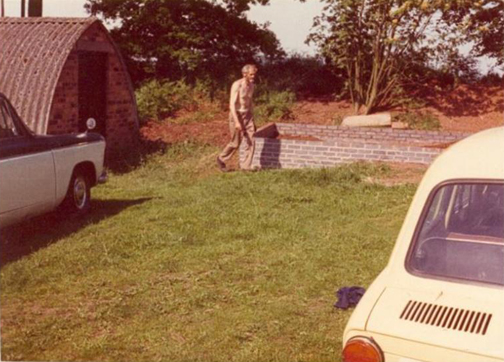
The above photograph shows the foundations for the new toilet.
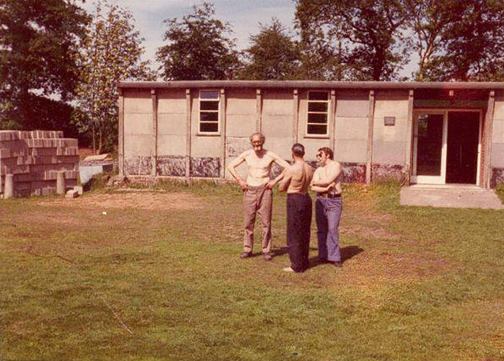
The above photograph shows the materials for the new toilet to the left of the club house.
Dennis built a raised area with a concrete base along the front of the club house. Using felled trees which were too small for commercial use, and cutting one tree down the middle with a chain saw to provide long beams, he had sufficient timber to provide a roof over the base. Sourcing a supply of soiled and surplus timber, he was able to construct a decorative paling fence along the front of the club house.
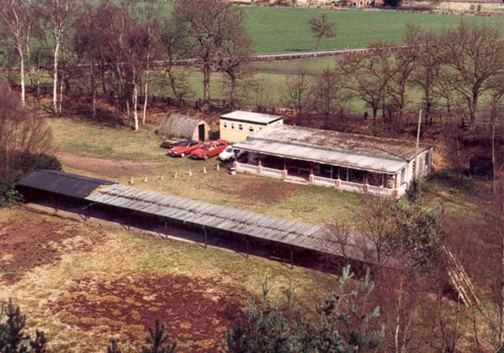
The above photograph shows the veranda to the front of the club house and the new toilet block between the club house and the mower hut.
A colleague of Dennis at his school had a pre-fabricated garage that he wanted removed. With the help of George Brittain it was dismantled, transported to the range and erected between the 100 yard and 50 metre ranges for use as a target store.
Following on the work done by Dennis Hannam, and also considering the many occasions he had assisted in the organisation and running of the County annual two day shoots, he was awarded the NSRA Silver Award for Special Services to Shooting. In the same year, the then County secretary, Frank Hilditch, was awarded the NSRA Long Service Award.
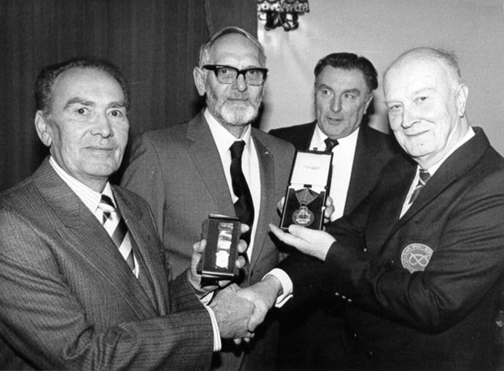
The above photograph shows Frank Hilditch on the left, next to Dennis Hannam, being presented with their awards by Reg De’Nicolas, with George Brittain in the background.
At some time after this, the old 50 yard firing point was converted to 50 metres.
Circa 1995, Bob Heath of the Market Drayton Rifle Club, suggested to the Staffordshire SBRA that a resident club be formed at the Chipperfield Range to provide facilities for local shooters to shoot in long range competitions where their own clubs didn't have such facilities. Also this would ensure that a regular watch could be kept on the property. The suggestion was accepted, and the Chipperfield Rifle Club was formed.
In mid 2002, The City of Birmingham Rifle Club were given notice to quit their range at Witton, Birmingham by the end of the year, and the Staffordshire Association kindly invited them to make the Chipperfield Ranges their home range and use the stats room as their club room. This kind offer was gratefully accepted.
Over the years the range and club house have been maintained and improved. The enclosed firing point to the “D” range has been rebuilt and a new roof, financed by the City of Birmingham R.C., fitted in place of the leaking corrugated iron over the 25 yard to 100 yard firing points. The kitchen has new work tops and cupboards, and the club house and toilets have been completely rewired.
In 2010, our Chairman Mr. Fred Jennings was awarded the NSRA Gold Award for his Special Services to Shooting. The medal and certificate were presented by our President, Major (retired) Peter Martin M.B.E. at the 2011 Annual General Meeting.
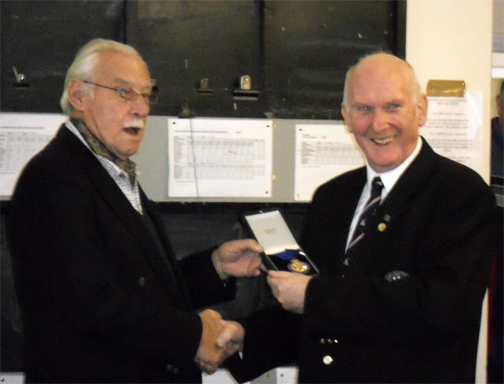
The above photograph shows Fred Jennings receiving his awards at the presentation held at the Rugeley Rifle Club.
'Meet the Chipperfields' Article - The Rifleman - Autumn 1997 - Issue 731
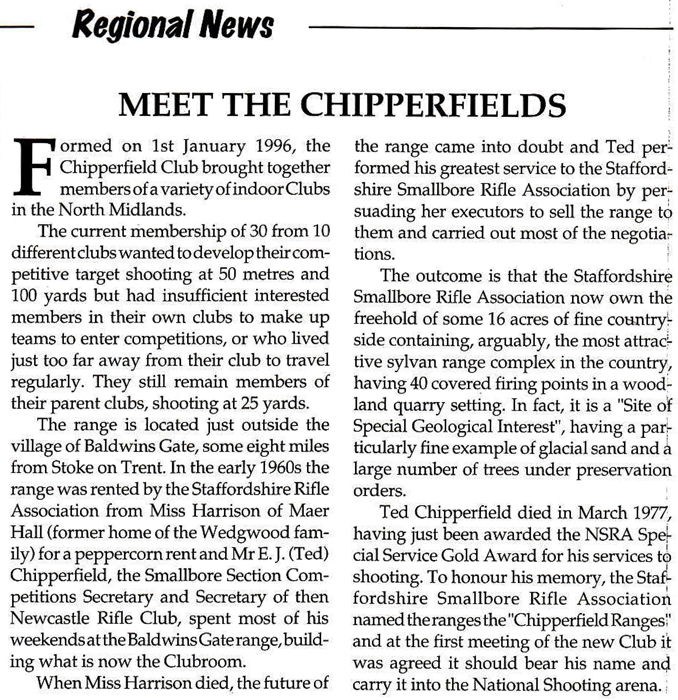
The above picture shows the 'Meet the Chipperfields' article, which appeared in The Rifleman magazine - Autumn 1997 - Issue 731.
Below is a transcription of an original article, shown above, which appeared in the Rifleman magazine - Autumn 1997.
Article begins:
Formed on 1st January 1996, the Chipperfield Club brought together members of a variety of indoor Clubs in the North Midlands.
The current membership of 30 from 10 different clubs wanted to develop their competitive target shooting at 50 metres and 100 yards but had insufficient interested members in their own clubs to make up teams to enter competitions, or who lived just too far away from their club to travel regularly. They still remain members of their parent clubs, shooting at 25 yards.
The range is located just outside the village of Baldwins Gate, some eight miles from Stoke-on-Trent. In the early 1960’s the range was rented by the Staffordshire Rifle Association from Miss Harrison of Maer Hall (former home of the Wedgwood family) for a peppercorn rent and Mr. E.J. (Ted) Chipperfield, the Smallbore Section Competitions Secretary and Secretary of then Newcastle Rifle Club, spent most of his weekends at the Baldwins Gate range, building what is now the Clubroom.
When Miss Harrison died, the future of the range came into doubt and Ted performed his greatest service to the Staffordshire Smallbore Rifle Association by persuading her executors to sell the range to them and carried out most of the negotiations.
The outcome is that the Staffordshire Smallbore Rifle Association now own the freehold of some 16 acres of fine countryside containing, arguably, the most attractive sylvan range complex in the country, having 40 covered firing points in a woodland quarry setting. In fact, it is a “Site of Special Geological Interest”, having a particularly fine example of glacial sand and a large number of trees under preservation orders.
Ted Chipperfield died in March 1977, having just been awarded the NSRA Special Service Gold Award for his services to shooting. To honour his memory, the Staffordshire Smallbore Rifle Association named the ranges the “Chipperfield Ranges” and at the first meeting of the new Club it was agreed it should bear his name and carry it into the National Shooting arena.
Article ends.
Those Were The Days - Part 1
The ten photographs which appear below, show the early days of the Chipperfield Ranges. The photographs were taken possibly in the mid to late 1950's. The photographs were kindly donated to SSRA by Richard Anthony Chipperfield Jones.
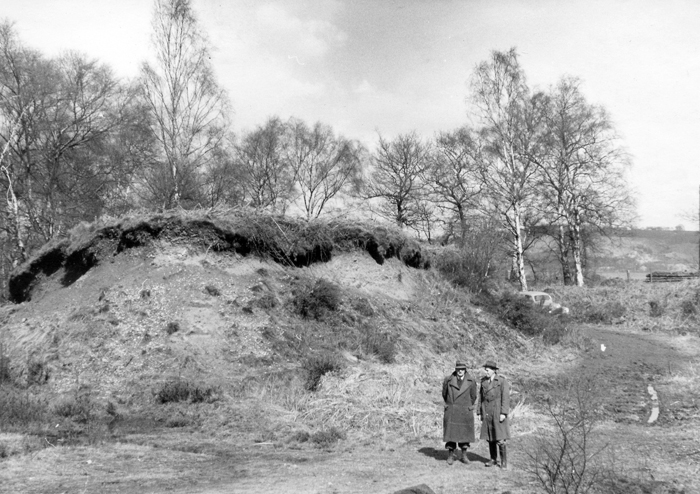
The above photograph shows the relatively unkempt terrain of the Chipperfield Ranges, prior to its development.
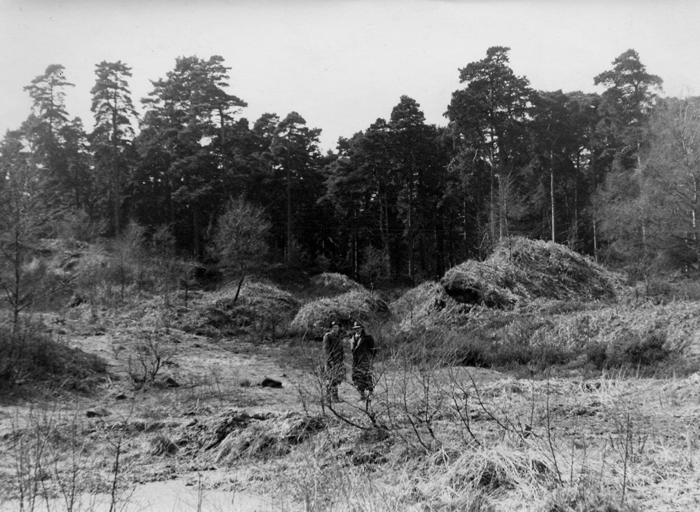
The above photograph shows the relatively unkempt terrain of the Chipperfield Ranges, prior to its development.
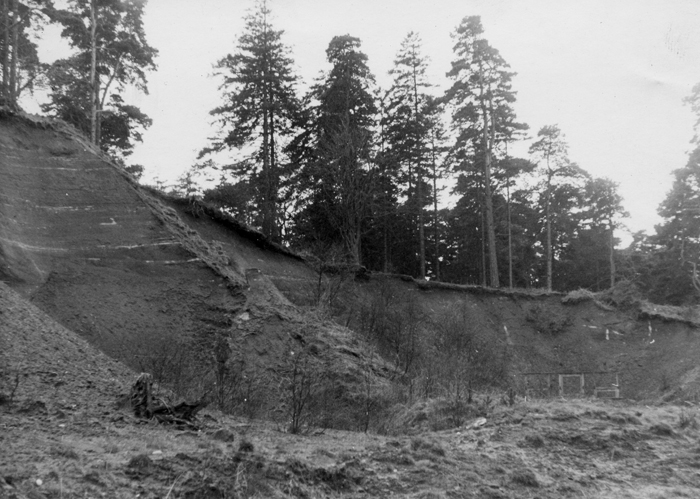
The above photograph shows the relatively unkempt terrain of the Chipperfield Ranges, prior to its development.
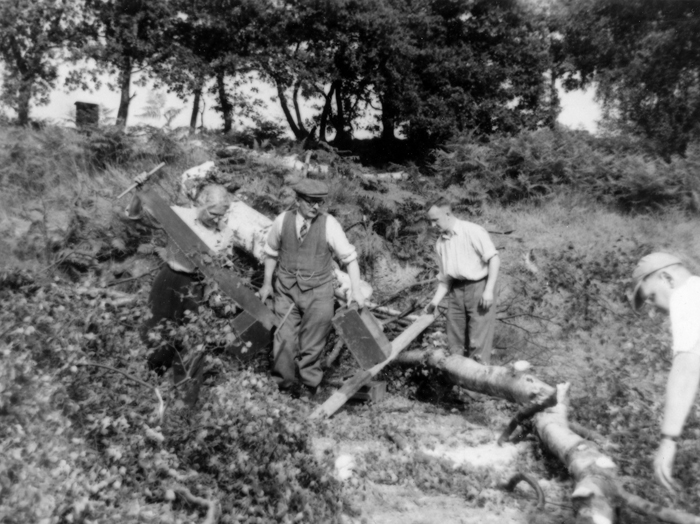
The above photograph shows a group of very willing committee members and shooters clearing trees.
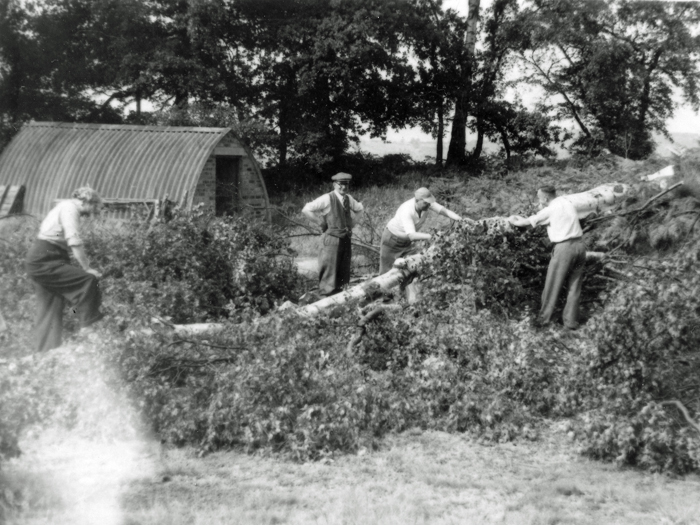
The above photograph shows a group of very willing committee members and shooters clearing trees.
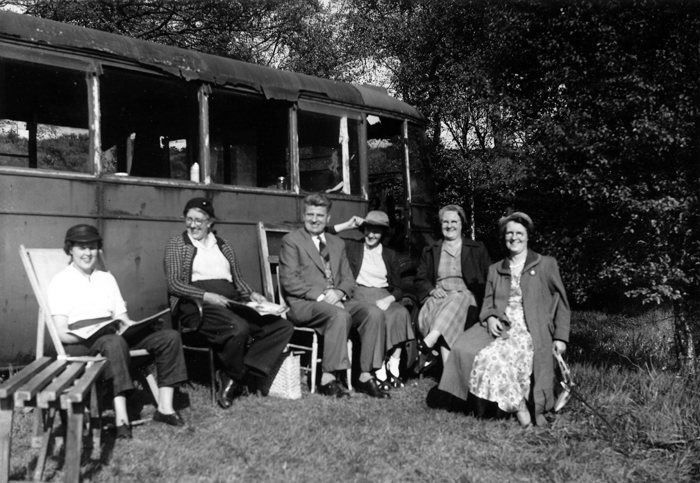
The above photograph shows the dilapidated bus that was used as a temporary clubhouse-come-shelter, prior to the erection of a purpose-built clubhouse.
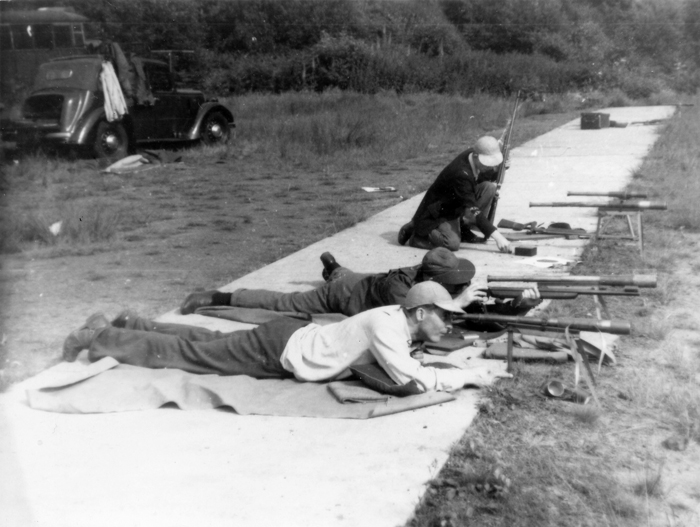
The above photograph shows competitors settling down prior to shooting on the exposed firing points.

The above photograph shows representatives of the armed forces (cadets maybe) and various dignitaries at a competition held at the Chipperfield Ranges.
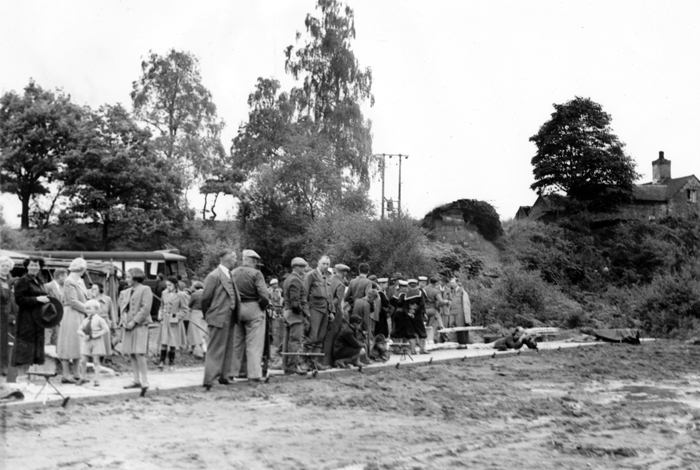
The above photograph shows representatives of the armed forces (cadets maybe) and various dignitaries at a competition held at the Chipperfield Ranges.
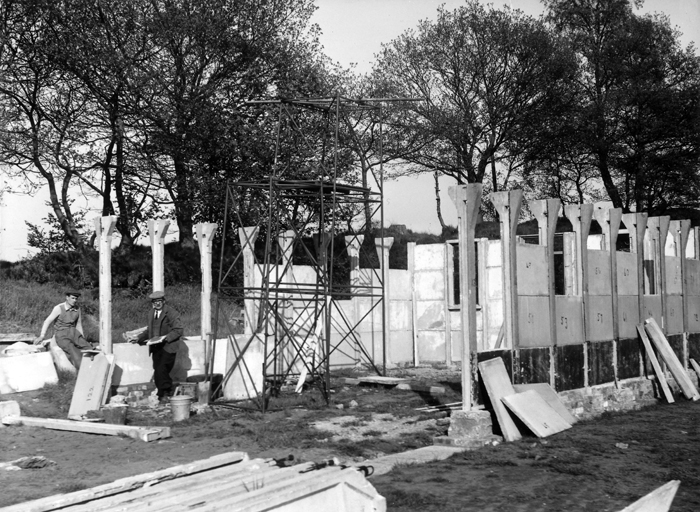
The above photograph shows the new clubhouse being erected. The various sections of the clubhouse were all numbered, so that they could be assembled correctly.
More details of the history, and noteworthy items of interest relating to the SSRA, appear on the following webpages:
The History of the Staffordshire Smallbore Rifle Association - Page 2
The History of the Staffordshire Smallbore Rifle Association - Page 3
Copyright © Staffordshire Smallbore Rifle Association - NSRA Affiliation No 2285
